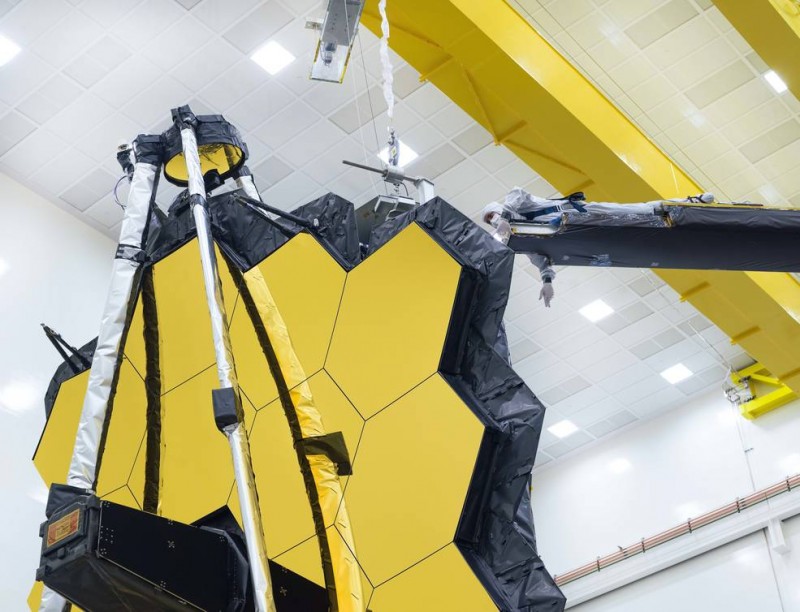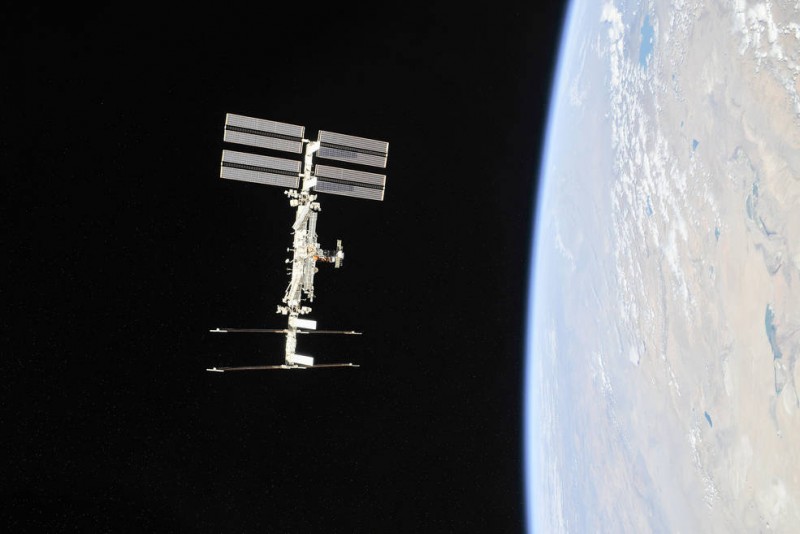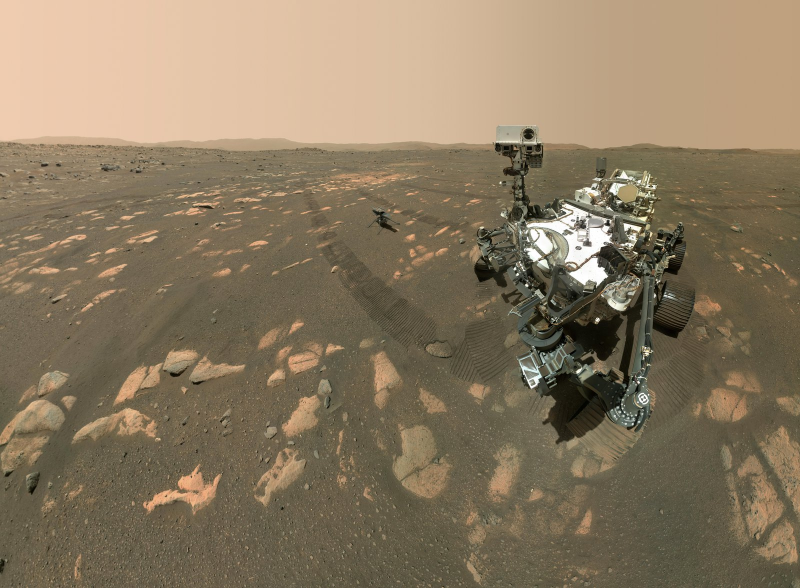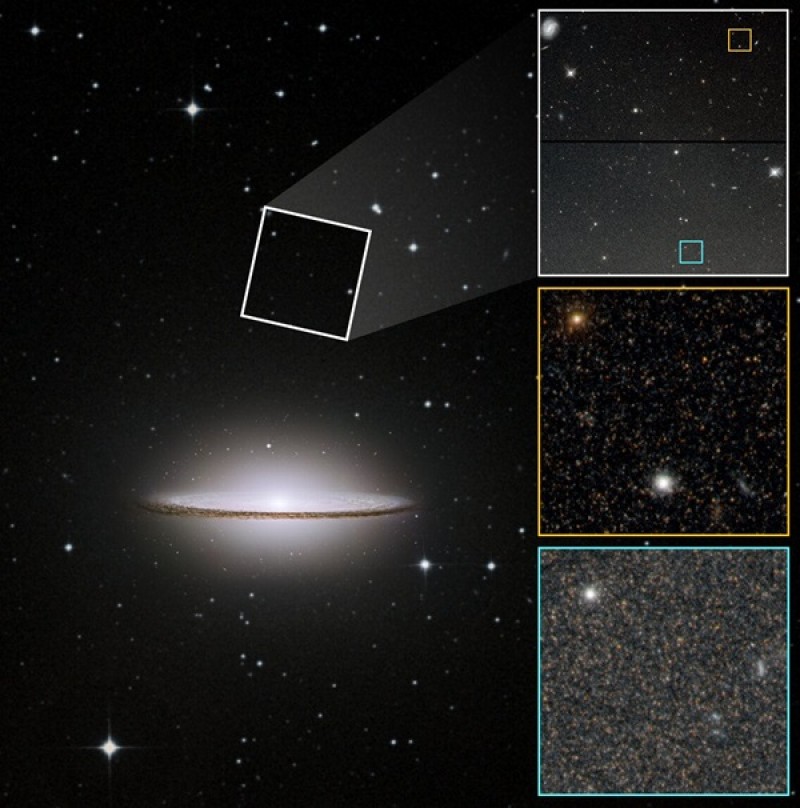News
NASA’s OSIRIS-REx Spacecraft Heads for Earth with Asteroid Sample
Thursday, May 13th 2021 05:32 PM
NASA’s OSIRIS-REx Spacecraft Heads for Earth with Asteroid Sample
After nearly five years in space, NASA’s Origins, Spectral Interpretation, Resource Identification, Security, Regolith Explorer (OSIRIS-REx) spacecraft is on its way back to Earth with an abundance of rocks and dust from the near-Earth asteroid Bennu.
On Monday, May 10, at 4:23 p.m. EDT the spacecraft fired its main engines full throttle for seven minutes – its most significant maneuver since it arrived at Bennu in 2018. This burn thrust the spacecraft away from the asteroid at 600 miles per hour (nearly 1,000 kilometers per hour), setting it on a 2.5-year cruise towards Earth.
After releasing the sample capsule, OSIRIS-REx will have completed its primary mission. It will fire its engines to fly by Earth safely, putting it on a trajectory to circle the sun inside of Venus’ orbit.
After orbiting the Sun twice, the OSIRIS-REx spacecraft is due to reach Earth Sept. 24, 2023. Upon return, the ca...
Read More
Read More
Webb’s Golden Mirror Wings Open One Last Time on Earth
Wednesday, May 12th 2021 08:09 PM
Webb’s Golden Mirror Wings Open One Last Time on Earth
For the last time while it is on Earth, the world’s largest and most powerful space science telescope opened its iconic primary mirror. This event marked a key milestone in preparing the observatory for launch later this year.
As part of the NASA’s James Webb Space Telescope’s final tests, the 6.5 meter (21 feet 4 inch) mirror was commanded to fully expand and lock itself into place, just like it would in space. The conclusion of this test represents the team’s final checkpoint in a long series of tests designed to ensure Webb’s 18 hexagonal mirrors are prepared for a long journey in space, and a life of profound discovery. After this, all of Webb’s many movable parts will have confirmed in testing that they can perform their intended operations after being exposed to the expected launch environment.
“The primary mirror is a technological marvel. The lightweight...
Read More
Read More
NASA’s Ingenuity Mars Helicopter Completes First One-Way Trip
Tuesday, May 11th 2021 04:40 PM
NASA’s Ingenuity Mars Helicopter Completes First One-Way Trip
NASA's Ingenuity Mars Helicopter's fifth flight was captured on May 7, 2021, by one of the navigation cameras aboard the agency's Perseverance rover. This was the first time it flew to a new landing site. Credit: NASA/JPL-Caltech
The Red Planet rotorcraft headed south in support of furthering research into the potential use of aerial scouts on Mars in the future.
NASA’s Ingenuity Mars Helicopter completed its fifth flight on the Red Planet today with its first one-way journey from Wright Brothers Field to an airfield 423 feet (129 meters) to the south. After arrival above its new airfield, Ingenuity climbed to an altitude record of 33 feet (10 meters) and captured high-resolution color images of its new neighborhood before touching down.
The flight represents the rotorcraft’s transition to its new operations demonstration phase. This phase will focus on investigating what kind of cap...
Read More
Read More
NASA, Axiom Agree to First Private Astronaut Mission on Space Station
Monday, May 10th 2021 08:56 PM
NASA, Axiom Agree to First Private Astronaut Mission on Space Station
The International Space Station photographed by Expedition 56 crew members from a Soyuz spacecraft after undocking on Oct. 4, 2018.
Credits: NASA/Roscosmos
NASA and Axiom Space have signed an order for the first private astronaut mission to the International Space Station to take place no earlier than January 2022.
“We are excited to see more people have access to spaceflight through this first private astronaut mission to the space station,” said Kathy Lueders, associate administrator for human exploration and operations at NASA Headquarters. “One of our original goals with the Commercial Crew Program, and again with our Commercial Low-Earth Orbit Development Program, is that our providers have customers other than NASA to grow a commercial economy in low-Earth orbit.”
The spaceflight, designated as Axiom Mission 1 (Ax-1), will launch from NASA...
Read More
Read More
Fourth Ingenuity Flight Video & Audio (NASA)
Friday, May 7th 2021 09:33 PM
NASA’s Perseverance Captures Video, Audio of Fourth Ingenuity Flight
On April 30, 2021, NASA’s Perseverance rover made history as the first spacecraft to record sounds from another spacecraft on another planet. During Ingenuity’s fourth flight, a microphone included with the SuperCam instrument aboard Perseverance captured the humming sound of the blades and the din of wind. Credit: NASA/JPL-Caltech/ASU/MSSS/LANL/CNES/CNRS/ISAE-SUPAERO
For the first time, a spacecraft on another planet has recorded the sounds of a separate spacecraft. NASA’s Perseverance Mars rover used one of its two microphones to listen as the Ingenuity helicopter flew for the fourth time on April 30, 2021. A new video combines footage of the solar-powered helicopter taken by Perseverance’s Mastcam-Z imager with audio from a microphone belonging to the rover’s SuperCam laser instrument.
The laser zaps rocks from a distance, studying th...
Read More
Read More
NASA: May 8 Rocket Launch
Thursday, May 6th 2021 10:15 PM
NASA Wallops May 8 Rocket Launch Visible in Eastern United States
A four-stage Black Brant XII sounding rocket. Credits: NASA
A mission to explore energy transport in space using a NASA suborbital sounding rocket launching May 8, 2021, from NASA’s Wallops Flight Facility in Virginia may provide a brief light show for residents of the eastern United States and Bermuda.
The mission is scheduled for no earlier than 8:02 p.m. EDT with a 40-minute launch window, Saturday, May 8. Backup launch days run through May 16. The launch may be visible, weather permitting, in much of the eastern United States from the Atlantic coast to the Mississippi River.
A four-stage Black Brant XII rocket will be used for the mission that includes the release of barium vapor that will form two green-violet clouds that may be visible for about 30 seconds. The barium vapor is not harmful to the environment or public health
The mission, called the KiNETic-scale energy an...
Read More
Read More
NASA’s Ingenuity Helicopter to Begin New Demonstration Phase
Wednesday, May 5th 2021 09:56 PM
NASA’s Perseverance Mars rover took a selfie with the Ingenuity helicopter, seen here about 13 feet (3.9 meters) from the rover. This image was taken by the WASTON camera on the rover’s robotic arm on April 6, 2021, the 46th Martian day, or sol, of the mission.
Credit: NASA/JPL-Caltech/MSSS
The Red Planet rotorcraft will shift focus from proving flight is possible on Mars to demonstrating flight operations that future aerial craft could utilize.
NASA’s Ingenuity Mars Helicopter has a new mission. Having proven that powered, controlled flight is possible on the Red Planet, the Ingenuity experiment will soon embark on a new operations demonstration phase, exploring how aerial scouting and other functions could benefit future exploration of Mars and other worlds.
This new phase will begin after the helicopter completes its next two flights. The decision to add an operations demonstration is a result of the Perseverance rover being ahead of...
Read More
Read More
Hubble finds hints the Sombrero galaxy had a turbulent past
Thursday, February 27th 2020 11:26 PM
New data from the Hubble Space Telescope reveals the popular Sombrero galaxy may have had a more violent past than previously thought. Based on the number of metal-rich stars Hubble spotted in the galaxy’s extended halo, astronomers think the seemingly serene Sombrero galaxy could have once went through a major merger with another galaxy.“The Sombrero has always been a bit of a weird galaxy, which is what makes it so interesting,” Paul Goudfrooij, a scientist for the Space Telescope Science Institute, said in a press release.The Sombrero galaxy is a go-to target for amateur observers, largely due to the stunningly smooth brim of its disk, which appears to us nearly edge on. This is where the Sombrero gets its name. But, as with most galaxies, the Sombrero’s stars extend far beyond the galaxy’s disk. This area of space surrounding the “sombrero” is called the halo.Halos are usually packed with old, metal-poor stars. But using Hubb...
Read More
Read More
Hubble captures a smeared fingerprint of an "anemic" galaxy
Wednesday, February 26th 2020 10:18 PM
Looking at this face-on view of the galaxy NGC 4689, as seen by the Hubble Space Telescope, you can barely tell it's a spiral galaxy. Instead, thanks to its relatively dim spiral arms, NGC 4689 looks more like a smeared cosmic fingerprint — especially when compared to some of Hubble's other high-contrast hits.This mottled appearance is because NGC 4689 is an “anemic galaxy,” which is a galaxy that’s deficient in neutral hydrogen, an element crucial for creating new stars. With fewer stars, the spiral arms of NGC 4689 — located some 50 million light-years from Earth — are less bright than the arms of many other spiral galaxies.This foggy view makes it hard to define the edges of each of the galaxy's blended arms, creating the smudged illusion of NGC 4689. However, as noted in a press release, the galaxy undoubtedly still has an "otherworldly charm."
Read More
Read More
The hottest known exoplanet is melting molecules in its atmosphere
Thursday, January 30th 2020 11:44 PM
The hottest known exoplanet is back in the news, answering some questions about ultra-hot planets, while also raising some new ones.
The planet, KELT-9b, was first announced in 2017. It’s roughly three times the mass of Jupiter, orbits its star every day and a half, and is a whopping 7,800 degrees Fahrenheit (4,300 Celsius). Just for the record, that’s hotter than some stars. And according to new research, the planet's dayside is also hot enough to tear apart hydrogen molecules, which astronomers recently observed.
Turn to heat evenly
Researchers, including Megan Mansfield from the University of Chicago, sought to understand how heat is distributed on this faraway world. So they watched carefully with the powerful (and soon to be decommissioned) Spitzer Space Telescope.
Like many close-in planets, KELT-9b is tidally locked to its star, meaning one side of the world is always facing its star, while the other side is permanently facing the chilling bla...
Read More
Read More









